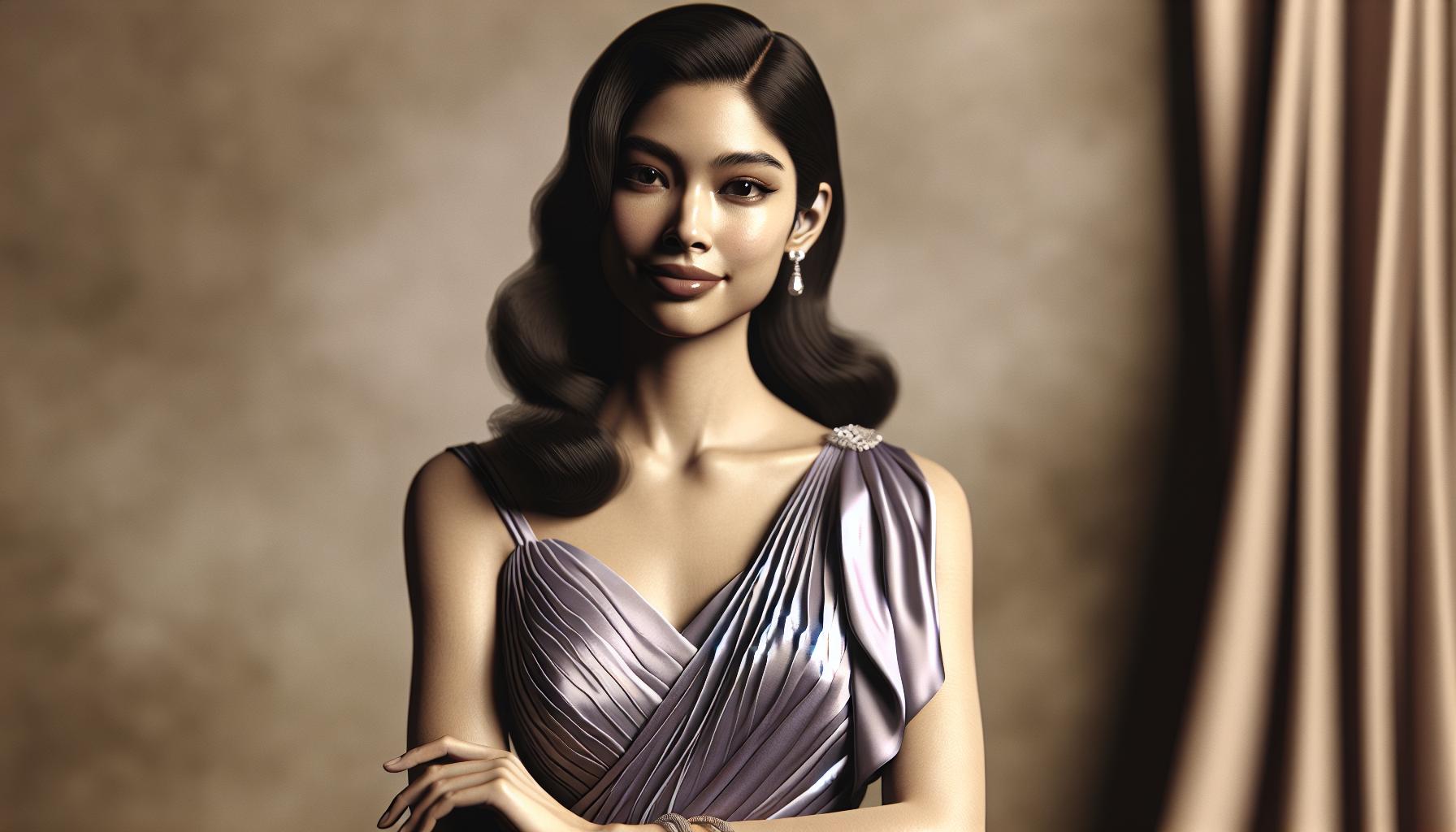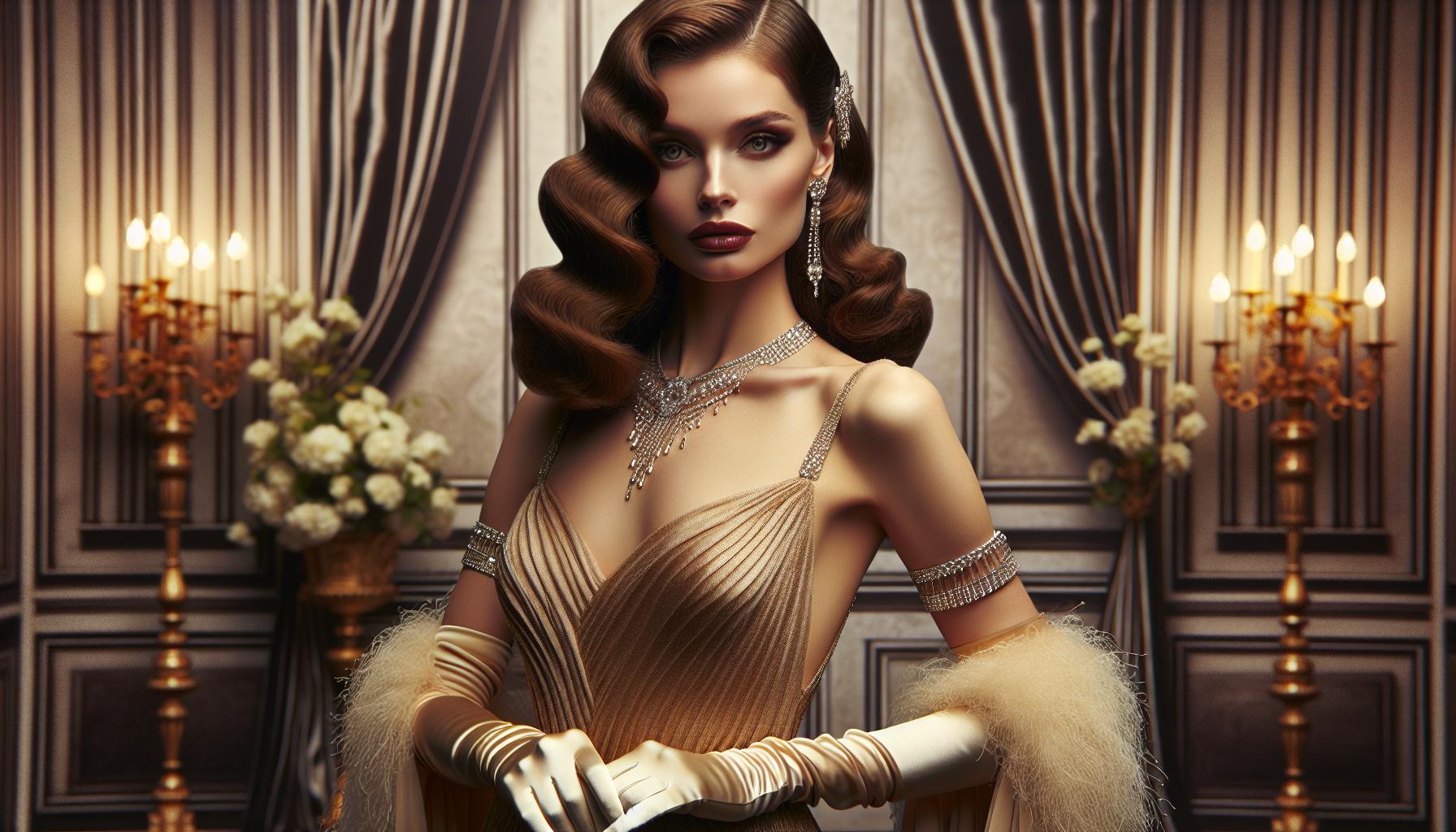The 1930s were a time when women’s fashion took a dramatic turn, blending elegance with a dash of rebellion. Picture this: glamorous Hollywood starlets strutting down the streets in flowing gowns, while everyday women embraced chic styles that turned heads and raised eyebrows. It was an era where the Great Depression met the rise of the modern woman, resulting in a fascinating mix of practicality and flair.
Women’s 1930s Fashion
Women’s fashion in the 1930s fused elegance with practicality. The era prompted a distinct signature style reflecting both the Hollywood glamour and the economic challenges of the time.
Key Characteristics
Simplicity marked the fashion trends of this decade. Elegant lines and soft fabrics created silhouettes that were flattering yet modest. Popular colors included earth tones and pastels, often paired with bold patterns. Dresses featured defined waistlines and flowing skirts, enhancing feminine shapes. Accessories such as wide-brimmed hats and gloves complemented outfits, adding sophistication. Styles also incorporated tailored blouses and trousers, showcasing the emerging modern woman’s preference for versatile pieces.
Influential Designers
Prominent designers played a crucial role in shaping 1930s women’s fashion. Madame Grès became known for her draped designs, which emphasized texture and movement. Claire McCardell gained acclaim for introducing functional yet stylish women’s wear that aligned with the practical needs of everyday life. Elsa Schiaparelli made bold statements with innovative designs and striking colors, challenging conventional norms. These influential figures not only inspired trends but also empowered women through fashion, reflecting a transformative era in style.
Fabrics and Textiles


Fabrics and textiles played a vital role in women’s 1930s fashion, showcasing both elegance and practicality. Soft materials like silk and rayon became highly favored, allowing for luxurious draping that enhanced feminine lines. Cotton also gained popularity due to its versatility and comfort, making it suitable for both casual and formal wear.
Popular Materials
Silk stood out for evening gowns, adding a touch of sophistication to women’s attire. Rayon emerged as a popular alternative, mimicking the feel of silk while being more affordable. Cotton provided comfort during daytime wear, allowing for informal dresses and blouses. Wool blended effortlessly into tailored pieces, offering warmth and structure. Each material contributed to the overall style of the decade, with designers often combining them to achieve unique looks.
Color Palettes
Color choices in the 1930s reflected a mix of earth tones and pastels, creating a palette that resonated with the era’s aesthetic. Shades like dusty rose and soft lavender became commonplace, softening the silhouettes of dresses. Bold patterns emerged, often featuring geometric shapes and floral designs, which added visual interest. Darker colors such as navy and forest green provided a sense of elegance, particularly in evening wear. Overall, the combination of these colors and patterns enhanced the stylish yet practical nature of women’s fashion.
Icons of Women’s 1930s Fashion


The 1930s showcased influential figures who shaped women’s fashion through their unique styles and contributions. Iconic personalities emerged in Hollywood and everyday life, reflecting the era’s blend of glamour and practicality.
Hollywood Influencers
Hollywood embraced fashion influencers who set trends for women across the nation. Stars like Greta Garbo and Joan Crawford became symbols of elegance, showcasing luxurious gowns with flowing silhouettes. Bette Davis introduced daring necklines that epitomized confidence and allure. These actresses wore designs that highlighted the waist, often accompanied by accessories like long gloves and statement jewelry. Their red-carpet appearances inspired everyday women to adopt similar styles, creating a desire for sophistication infused with femininity. As a result, Hollywood not only shaped trends but also defined an aspirational lifestyle that influenced women’s wardrobes during this transformative decade.
Everyday Style Icons
Everyday women also left a significant impact on fashion trends in the 1930s. Figures like Mae West championed a curvy silhouette through figure-hugging dresses, promoting body positivity. Working women embraced practicality without sacrificing style, often opting for tailored blouses and wide-leg trousers that offered comfort and versatility. Simple yet chic dresses, characterized by defined waistlines and soft fabrics, became prevalent at social events. Additionally, women adopted easier hairstyles, favoring waves that complemented casual looks. This period encouraged individuals to personalize their outfits, showcasing a balance between functionality and chicness. Overall, these everyday style icons represented the modern woman, reflecting a dynamic shift in fashion sensibilities.
Trends and Styles


The 1930s marked a pivotal time in women’s fashion, characterized by a blend of practicality and elegance across various styles and designs.
Daytime Attire
Daytime attire reflected the era’s desire for comfort while maintaining a chic appearance. Tailored blouses and wide-leg trousers gained popularity, providing versatility for everyday wear. Dresses with defined waistlines showcased flattering silhouettes, often in soft fabrics like cotton and rayon. Pastel colors, along with bold patterns, made outfits visually appealing. Accessories like wide-brimmed hats and gloves completed the look, adding sophistication. Women embraced this blend of style and practicality, embodying the modern woman of the 1930s.
Evening Wear
Evening wear of the 1930s emphasized glamour and elegance. Luxurious silk and velvet fabrics became staples for formal events, enhancing the draping and movement of garments. Long gowns featuring flowing skirts and daring necklines contributed to a sense of sophistication. Shades like deep navy and rich burgundy dominated color palettes, often accented with intricate details or embellishments. Hollywood influences drove trends, as stars donned striking gowns that inspired everyday women. Evening wear exemplified the contrast of allure and practicality, showcasing beauty in each elegant piece.
Fashion in the Olden Days
The 1930s marked a transformative period in women’s fashion where elegance met practicality. This decade not only showcased the influence of Hollywood but also empowered women to express their individuality through stylish yet functional attire. The blend of soft fabrics and bold patterns created a unique aesthetic that resonated with both glamour and everyday life.
Influential designers and style icons of the time played crucial roles in shaping these trends, inspiring women to embrace their femininity while navigating the challenges of the Great Depression. As the modern woman emerged, she found a voice in fashion that celebrated both beauty and practicality, leaving a lasting legacy that continues to influence styles today.

